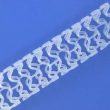Takayasu arteritis (TAK) is an uncommon granulomatous large-vessel vasculitis that affects the aorta and its primary branches. The most frequently types of observed vascular compromise are obstructive lesions, and aneurysmal vascular lesions or dissections. In 2021, the American College of Rheumatology recommended not to implement percutaneous intervention (PI) with these patients and only use immunosuppressive...
Spontaneous Coronary Artery Dissection: Are There Differences Between Men and Women?
Spontaneous coronary artery dissection is one of the causes of acute coronary syndrome, with a prevalence between 1 and 4%, that might reach up to 35% in women <50 years old, according to recent studies. As dissections are more frequent in women, research focuses on this population. Small retrospective studies have shown different triggers and predisposing...
Stent Thrombosis: Clinical Characteristics and Event Predictors in a Contemporary Cohort
Stent thrombosis (ST) is a serious complication of coronary PCI. However, its incidence across registries is low. It has been classified according to onset into acute (less than 24 hrs.), subacute (between 24 and 30 days), late (between 30 and 365 days) and very late (later than 365 days). The estimated incidence of ST is...
PCI on Native Arteries or Saphenous Vein Grafts: Which Has Better Prognosis?
New revascularization after coronary artery bypass graft (CABG) is often needed, be it because of severe bridge lesion, intimal hyperplasia, thrombosis, atherosclerosis, or native vessel lesion progression. We therefore need to determine the best revascularization strategy, namely native or graft percutaneous intervention, venous or arterial, or repeat surgery, with the risk it entails. There is...
Drug Eluting Stents: Does Strut Size Matter?
The benefit of first-generation Drug-Eluting Stents (DES) over Bare Metal Stents (BMS) is largely known. Moreover, technological developments have led to reduced strut size, biodegradable polymers, and new scaffolds, which in turn have led to improved outcomes. These are known as ultrathin stents, and its struts measure between 70 and 100 microns, which contributes to...
Last Bastion of Bare Metal Stents Finally Falls
Multiple studies have shown the safety and efficacy of drug eluting stents (DES) in patients with high risk of bleeding. Only one last bastion of bare metal stents (BMS) was left standing: vein grafts. With controversial evidence and different physiopathology, many still argued against DES in saphenous vein grafts. This multicenter study randomized patients with...
The Most Read Articles of July in solaci website
1-Though Systolic BP Seems More Important, Diastolic BP Should Not Be Disregarded Systolic hypertension is more often associated to cardiovascular events. However, diastolic blood pressure should not be disregarded, since it can also predict even worse outcomes. Read more HERE 2-After Much Toing and Froing, Gastrointestinal Protection Is Back to the Forefront Several clinical guidelines...
DES with Bioresorbable Polymer vs. Bare Metal Stents in Primary PCI
Long after myocardial revascularization guidelines had established no medical reason justifies the use of bare metal stents (BMS), along comes this study to refresh the old trials comparing drug eluting vs bare metal stents in the context of primary PCI. The problem for many countries is that primary PCI obviously occurs in the context of...
The Dangerous Combination of Complex Angioplasty and High Bleeding Risk Seems to Have a Solution
The LEADERS FREE trial demonstrated that a polymer-free Biolimus A9-coated stent (BioFreedom™DCS; Biosensors Europe, Morges, Switzerland) is superior to a conventional stent (bare metal stent, BMS) in patients with high bleeding risk treated with only one month of dual antiplatelet therapy. Now, is this global study outcome applicable in cases of complex lesions with several...
Surgery Seems Superior to Angioplasty in Young Patients
Long-term follow-up of patients under 50 with multivessel coronary artery disease suggests surgery outcomes are significantly better than angioplasty outcomes. This study, presented at the Society of Thoracic Surgeons’ (STS) Annual Meeting, concludes that surgery should continue as plan A when it comes to young patients with three-vessel disease. Surgeons complain that many patients never actually...








